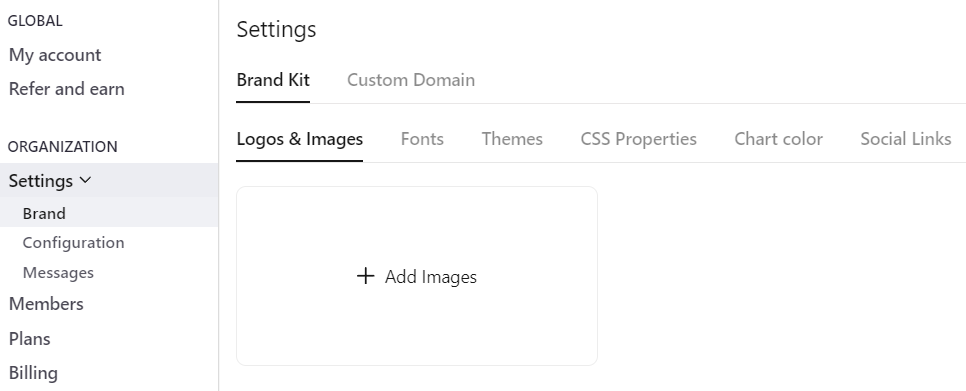- What You’ll Learn
- 1. Why is Aesthetics important when designing Surveys?
- 2. Prioritize Purpose Over Prettiness
- 3. Be Aware of Your Survey Audience
- 4. Be Consistent In Survey Design
- 5. Include Images to complement the Survey
- 6. Understand Color Psychology
- 7. Choose the right Font
- 8. Use White Space Wisely
- Test Your Knowledge
- Key Takeaways
Get insights.
Unlock value.
- 14-day free trial
- Set up in minutes
- No credit card required
How to create aesthetic surveys?
- What You’ll Learn
- 1. Why is Aesthetics important when designing Surveys?
- 2. Prioritize Purpose Over Prettiness
- 3. Be Aware of Your Survey Audience
- 4. Be Consistent In Survey Design
- 5. Include Images to complement the Survey
- 6. Understand Color Psychology
- 7. Choose the right Font
- 8. Use White Space Wisely
- Test Your Knowledge
- Key Takeaways
What You’ll Learn
By the end of this lesson, you’ll be able to:
- Understand the importance of aesthetics in survey design.
- Identify Strategies to create aesthetic surveys.
- Increase completion rates for your survey with the help of aesthetically created surveys.
1. Why is Aesthetics important when designing Surveys?
Aesthetics plays a crucial role in forms and surveys as it can significantly impact the user's experience and, ultimately, the quality of the data collected. A well-designed form or survey is more likely to engage users, reduce errors, and increase completion rates.
Aesthetics can influence user behavior, with a visually appealing design encouraging users to stay on track and provide accurate responses. Conversely, a poorly designed form or survey can lead to frustration, abandonment, and poor data quality. By prioritizing aesthetics, you can create a user-friendly and intuitive experience that builds trust.
2. Prioritize Purpose Over Prettiness
One might be tempted to use vibrant colors for your surveys. On the contrary, you may use a minimalistic design. Before working on the survey design, you'll need to think of its purpose. In other words, prioritize Purpose Over Prettiness.
Consider that you are designing a restaurant feedback survey for an upscale fine dining restaurant. Do you think using vibrant and fancy colors for this survey will be helpful? I don’t think so. In this case, the restaurant feedback survey will need a clean, minimalist, and professional design, catering to the needs of affluent customers taking the feedback survey.
Here is another example. You are now running a feedback survey for a casual eatery that is affordable, fun & lively. Do you think minimalist design will cater to celebration events? Think again. A feedback survey for a fun & lively casual eatery will need vibrant colors and dynamic elements.
BlockSurvey offers 3 different survey-taking views.
- Classic
- One question at a time
- Conversational
Choose a survey-taking view that matches your purpose.
3. Be Aware of Your Survey Audience
Knowing the survey audience plays a vital role in the design of the survey.
The restaurant diner may be young or old. The audience may be technically adept or a layman. The audience may be local or foreign. The audience may be college students or working professionals. It is important to choose a survey style that suits your survey audience.
Let’s consider that your restaurant diner is young. Younger audiences tend to like surveys that are vibrant and colorful. So, it is appropriate to go for a vibrant design.
On the contrary, you need to know how to design surveys when your restaurant diner is old. Older audiences prefer very neat and easy-to-understand surveys. In this case, having vibrant colors and dynamic elements may confuse the older audience. So, it is better to use a survey design style that is neat, minimalistic, and easy to understand.
4. Be Consistent In Survey Design
How often have you seen social media pages with inconsistent posts? Inconsistent design is caused by a lack of brand guidelines. This case applies not only to social posts, but also to surveys.
When you create a survey, your design must be consistent from beginning to end. Consider framing your brand guidelines, if you don’t have one yet. Consistent logo, colors, and fonts are essential. Consistent design improves the respondent's trust in your survey & builds loyalty.
Inconsistent design can be distracting and appear very unprofessional.
Following the brand guidelines imparts a consistent design in your survey.
Below is a screenshot of the BlockSurvey Brand Kit.

5. Include Images to complement the Survey
Images bring life to a survey; however, remember to use images thoughtfully. Images should complement the survey, not overwhelm it.
For instance, a certain survey can use scenic photographs, but they shouldn't be a distraction while taking the survey.
It takes time to browse through image libraries and choose an image that is a perfect fit for your survey. Use a photo editor to align images with your brand guidelines. Also, while using images, be sure you have the right to use an image to avoid copyright issues.
Be prepared upfront and upload images to the BlockSurvey Brand Kit.
6. Understand Color Psychology
Colors evoke emotions. Smart usage of colors is essential to fields such as marketing, market research, and branding.
Understand the psychology behind colors to influence the mood of your respondents. Each color carries with it a subconscious message that can profoundly influence your respondents’ thoughts, moods, and decisions.
For example,
- Blue evokes feelings of trust
- Red induces excitement
- Green evokes feelings of freshness
- Yellow stirs feelings of happiness
So, use the right color for your surveys and influence the mood of your respondents.
7. Choose the right Font
The font you choose for surveys speaks volumes. The font you choose sets the tone for your survey.
The first point to consider while choosing fonts for your survey is readability. Readability ensures that respondents can read your survey clearly and provide accurate responses.
Take some time to carefully choose the font to use so that your font complements the survey purpose. Even before reading the question, the respondent sees your font and assesses the quality of the survey.
Taking the restaurant example, once again. Decorative or modern fonts can help reinforce the aesthetics for a creative and artistic restaurant. Minimalist fonts convey professionalism for an upscale and formal restaurant.
Stick to 2 to 3 fonts at most and ensure user-friendliness.
8. Use White Space Wisely
White space is an unavoidable element of design & aesthetics. This holds true for surveys also.
Including necessary white space ensures your surveys don’t look overwhelming or heavy.
White space is not just empty-space; it's breathing room for your content.
Whitespace can help declutter your survey, making it more comfortable to read and navigate.
Try to shorten longer questions, use page breaks, and add sections, all with balanced use of white space.
Test Your Knowledge
How to create aesthetic surveys? FAQ
What is the importance of creating aesthetic surveys?
Aesthetic surveys enhance user experience and increase engagement and response rates.
How can I design an aesthetically pleasing survey?
Use visually appealing themes, clear fonts, and intuitive layout to create an attractive survey.
Does the design of a survey impact the quality of responses?
Yes, a well-designed survey increases user motivation and encourages more thoughtful and accurate responses.
Are there any best practices for choosing colors and fonts for surveys?
Opt for harmonious color schemes and legible fonts that align with your target audience and survey goals.
Can I use images and media in my surveys?
Yes, incorporating images, videos, or audio can enhance the visual appeal and engagement of your survey.
Get insights.
Unlock value.
- 14-day free trial
- Set up in minutes
- No credit card required
